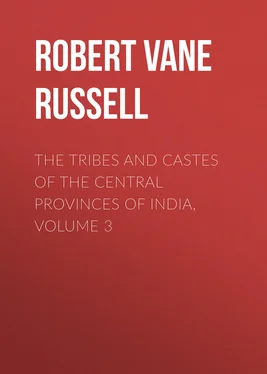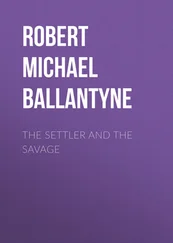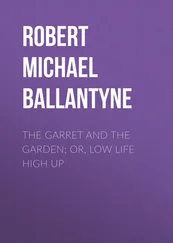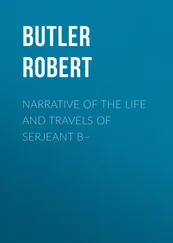Robert Vane Russell - The Tribes and Castes of the Central Provinces of India, Volume 3
Здесь есть возможность читать онлайн «Robert Vane Russell - The Tribes and Castes of the Central Provinces of India, Volume 3» — ознакомительный отрывок электронной книги совершенно бесплатно, а после прочтения отрывка купить полную версию. В некоторых случаях можно слушать аудио, скачать через торрент в формате fb2 и присутствует краткое содержание. Жанр: foreign_prose, История, foreign_edu, foreign_antique, на английском языке. Описание произведения, (предисловие) а так же отзывы посетителей доступны на портале библиотеки ЛибКат.
- Название:The Tribes and Castes of the Central Provinces of India, Volume 3
- Автор:
- Жанр:
- Год:неизвестен
- ISBN:нет данных
- Рейтинг книги:5 / 5. Голосов: 1
-
Избранное:Добавить в избранное
- Отзывы:
-
Ваша оценка:
- 100
- 1
- 2
- 3
- 4
- 5
The Tribes and Castes of the Central Provinces of India, Volume 3: краткое содержание, описание и аннотация
Предлагаем к чтению аннотацию, описание, краткое содержание или предисловие (зависит от того, что написал сам автор книги «The Tribes and Castes of the Central Provinces of India, Volume 3»). Если вы не нашли необходимую информацию о книге — напишите в комментариях, мы постараемся отыскать её.
The Tribes and Castes of the Central Provinces of India, Volume 3 — читать онлайн ознакомительный отрывок
Ниже представлен текст книги, разбитый по страницам. Система сохранения места последней прочитанной страницы, позволяет с удобством читать онлайн бесплатно книгу «The Tribes and Castes of the Central Provinces of India, Volume 3», без необходимости каждый раз заново искать на чём Вы остановились. Поставьте закладку, и сможете в любой момент перейти на страницу, на которой закончили чтение.
Интервал:
Закладка:
5. Religion and superstitions
Children are named on the sixth day after birth, special names being given to avert ill-luck, while they sometimes go through the ceremony of selling a baby for five cowries in order to disarm the jealousy of the godlings who are hostile to children. They will not call any person by name when they think an owl is within hearing, as they believe that the owl will go on repeating the name and that this will cause the death of the person bearing it. The caste generally revere Dūlha Deo, the bridegroom god, whose altar stands near the cooking place, and the goddess Devi. Once in three years they offer a white goat to Bura Deo, the great god of the Gonds. They worship the sickle, the implement of their trade, at Dasahra, and offer cocoanuts and liquor to Ghāsi Sādhak, a godling who lives by the peg to which horses are tied in the stable. He is supposed to protect the horse from all kinds of diseases. At Dasahra they also worship the horse. Their principal festival is called Karma and falls on the eleventh day of the second half of Bhādon (August). On this day they bring a branch of a tree from the forest and worship it with betel, areca-nut and other offerings. All through the day and night the men and women drink and dance together. They both burn and bury the dead, throwing the ashes into water. For the first three days after a death they set out rice and pulse and water in a leaf cup for the departed spirit. They believe that the ghosts of the dead haunt the living, and to cure a person possessed in this manner they beat him with shoes and then bury an effigy of the ghost outside the village.
6. Occupation
The Ghasias usually work as grass-cutters and grooms to horses, and some of them make loom-combs for weavers. These last are looked down upon and called Madarchawa. They make the kūnch or brushes for the loom, like the Kūchbandhias, from the root of the babai or khas-khas grass, and the rāchh or comb for arranging the threads on the loom from the stalks of the bharru grass. Other Ghasias make ordinary hair combs from the kathai , a grass which grows densely on the borders of streams and springs. The frame of the comb is of bamboo and the teeth are fixed in either by thread or wire, the price being one pice (farthing) in the former case and two in the latter.
7. Social customs
The caste admit outsiders by a disgusting ceremony in which the candidate is shaved with urine and forced to eat a mixture of cowdung, basil leaves, dub 28 28 Cynodon dactylon.
grass and water in which a piece of silver or gold has been dipped. The women do not wear the choli or breast-cloth nor the nose-ring, and in some localities they do not have spangles on the forehead. Women are tattooed on various parts of the body before marriage with the idea of enhancing their beauty, and sometimes tattooing is resorted to for curing a pain in some joint or for rheumatism. A man who is temporarily put out of caste is shaved on readmission, and in the case of a woman a lock of her hair is cut. To touch a dead cow is one of the offences entailing temporary excommunication. They employ a Brāhman only to fix the dates of their marriages. The position of the caste is very low and in some places they are considered as impure. The Ghasias are very poor, and a saying about them is ‘ Ghasia ki jindagi hasia ’, or ‘The Ghasia is supported by his sickle,’ the implement used for cutting grass. The Ghasias are perhaps the only caste in the Central Provinces outside those commonly returning themselves as Mehtar, who consent to do scavenger’s work in some localities.
8. Ghasias and Kāyasths
The caste have a peculiar aversion to Kāyasths and will not take food or water from them nor touch a Kāyasth’s bedding or clothing. They say that they would not serve a Kāyasth as horse-keeper, but if by any chance one of them was reduced to doing so, he at any rate would not hold his master’s stirrup for him to mount. To account for this hereditary enmity they tell the following story:
On one occasion the son of the Kāyasth minister of the Rāja of Ratanpur went out for a ride followed by a Ghasia sais (groom). The boy was wearing costly ornaments, and the Ghasia’s cupidity being excited, he attacked and murdered the child, stripped him of his ornaments and threw the body down a well. The murder was discovered and in revenge the minister killed every Ghasia, man, woman or child that he could lay his hands on. The only ones who escaped were two pregnant women who took refuge in the hut of a Gānda and were sheltered by him. To them were born a boy and a girl and the present Ghasias are descended from the pair. Therefore a Ghasia will eat even the leavings of a Gānda but will accept nothing from the hands of a Kāyasth.
This story is an instance of the process which has been called the transplantation of myth. Sir H. Risley tells a similar legend of the Ghasias of Orissa, 29 29 Tribes and Castes of Bengal , art. Ghāsi.
but in their case it was a young Kāyasth bridegroom who was killed, and before dying he got leave from his murderers to write a letter to his relatives informing them of his death, on condition that he said nothing as to its manner. But in the letter he disclosed the murder, and the Ghasias, who could not read, were duly brought to justice. In the Ratanpur story as reported from Bilāspur it was stated that “Somehow, even from down the well, the minister’s son managed to get a letter sent to his father telling him of the murder.” And this sentence seems sufficient to establish the fact that the Central Provinces story has merely been imported from Orissa and slightly altered to give it local colour. The real reason for the traditional aversion felt by the Ghasias and other low castes for the Kāyasths will be discussed in the article on that caste.
Ghosi
Ghosi. 30 30 This article is based partly on a paper by Khān Bahādur Imdād Ali, Pleader, Damoh.
—A caste of herdsmen belonging to northern India and found in the Central Provinces in Saugor and other Districts of the Jubbulpore and Nerbudda Divisions. In 1911 they numbered 10,000 persons in this Province out of a strength of about 60,000 in India. The name is said to be derived from the Sanskrit root ghush , to shout, the word ghosha meaning one who shouts as he herds his cattle. A noticeable fact about the caste is that, while in Upper India they are all Muhammadans—and it is considered to be partly on account of the difference in religion that they have become differentiated into a separate caste from the Ahīrs—in the Central Provinces they are nearly all Hindus and show no trace of Muhammadan practices. A few Muhammadan Ghosis are found in Nimār and some Muhammadans who call themselves Gaddi in Mandla are believed to be Ghosis. And as the Ghosis of the northern Districts of the Central Provinces must in common with the bulk of the population be descended from immigrants from northern India, it would appear that they must have changed their religion, or rather abandoned one to which their ancestors had only been imperfectly proselytised, when it was no longer the dominant faith of the locality in which they lived. Sir D. Ibbetson says that in the Punjab the name Ghosi is used only for Muhammadans, and is often applied to any cowherd or milkman of that religion, whether Gūjar, Ahīr or of any other caste, just as Goāla is used for a Hindu cowherd. It is said that Hindus will buy pure milk from the Musalmān Ghosi, but will reject it if there is any suspicion of its having been watered by the latter, as they must not drink water at his hands. 31 31 Punjab Census Report (1881), para. 272.
But in Berār Brāhmans will now buy milk and curds from Muhammadan milkmen. Mr. Crooke remarks that most of the Ghosis are Ahīrs who have been converted to Islām. To the east of the United Provinces they claim a Gūjar origin, and here they will not eat beef themselves nor take food with any Muhammadans who consume it. They employ Brāhmans to fix the auspicious times for marriage and other ceremonies. The Ghosis of Lucknow have no other employment but the keeping of milch cattle, chiefly buffaloes of all kinds, and they breed buffaloes. 32 32 Crooke’s Tribes and Castes , art. Ghosi.
This is the case also in Saugor, where the Ghosis are said to rank below ordinary Ahīrs because they breed and tend buffaloes instead of cows. Those of Narsinghpur, however, are generally not herdsmen at all but ordinary cultivators. In northern India, owing to the large number of Muhammadans who, other things being equal, would prefer to buy their milk and ghī from co-religionists, there would be an opening for milkmen professing this faith, and on the facts stated above it may perhaps be surmised that the Ghosi caste came into existence to fill the position. Or they may have been forcibly converted as a number of Ahīrs in Berār were forcibly converted to Islām, and still call themselves Muhammadans, though they can scarcely repeat the Kalma and only go to mosque once a year. 33 33 From a note by Mr. Hīra Lāl.
But when some of the Ghosis migrated into the Central Provinces, they would find, in the absence of a Musalmān clientele, that their religion, instead of being an advantage, was a positive drawback to them, as Hindus would be reluctant to buy milk from a Muhammadan who might be suspected of having mixed it with water; and it would appear that they have relapsed naturally into Hinduism, all traces of their profession of Islām being lost. Even so, however, in Narsinghpur they have had to abandon their old calling and become ordinary cultivators, while in Saugor, perhaps on account of their doubtful status, they are restricted to keeping buffaloes. If this suggestion turned out to be well founded, it would be an interesting instance of a religion being changed to secure a professional advantage. But it can only be considered as a guess. A parallel to the disadvantage of being unable to water their milk without rendering it impure, which attaches to the Ghosis of the Punjāb, may be adduced in the case of the Telis of the small town of Multai in Betūl District. Here the dairyman’s business is for some reason in the hands of Telis (oilmen) and it is stated that from every Teli who engages in it a solemn oath is exacted that he will not put water in the milk, and any violation of this would be punished by expulsion from caste. Because if the Hindus once found that they had been rendered impure by drinking water touched by so low a caste as the Telis, they would decline any longer to purchase milk from them. It is curious that the strict rule of ceremonial purity which obtains in the case of water has apparently no application to milk.
Интервал:
Закладка:
Похожие книги на «The Tribes and Castes of the Central Provinces of India, Volume 3»
Представляем Вашему вниманию похожие книги на «The Tribes and Castes of the Central Provinces of India, Volume 3» списком для выбора. Мы отобрали схожую по названию и смыслу литературу в надежде предоставить читателям больше вариантов отыскать новые, интересные, ещё непрочитанные произведения.
Обсуждение, отзывы о книге «The Tribes and Castes of the Central Provinces of India, Volume 3» и просто собственные мнения читателей. Оставьте ваши комментарии, напишите, что Вы думаете о произведении, его смысле или главных героях. Укажите что конкретно понравилось, а что нет, и почему Вы так считаете.












